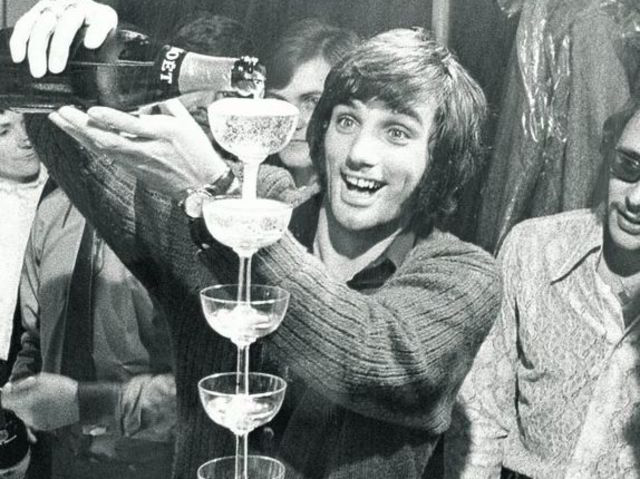A total of 116 Gold and 128 Silver medals were awarded in this year’s Champagne & Sparking Wine World Championships that judges the best of the best from the world of fizz.
France re-asserted its position as the world’s finest producer of sparkling wine in the world with the largest haul of Gold and Silver medals, 47 and 36 respectively, in this year’s Champagne & Sparkling Wine World Championships. Albeit France does have a slight advantage as it is the only country able to produce Champagne.
Which is a similar story for Italy in second place with a collective total of 71 Gold and Silver medals, including its exclusive Franciacorta style which came out top as the best performing Italian region along with Trentodoc.
The CSWWC competition has within five years positioned itself as the pinnacle achievement for many in the Champagne and sparkling wine sectors thanks to the respect and professionalism of the competition’s founder, Tom Stevenson, and two fellow judges, Essi Avellan MW and Dr Tony Jordan.
Click HERE to see all the Gold and Silver medal winners from the 2018 competition.

Who came out top of the tower in the CSWWC awards?
Expert advice
Together the three judges assess all the wines blind between them, only putting those entries they think worthy of a Gold or Silver forward for a medal. All producers that enter are given a comprehensive tasting assessment of their wines that allow them to see where they sit and why they were awarded the mark they were. It is felt what would be Bronze medal winners are better assessed and informed in that way with feedback on where they might be able to move up to a Gold or Silver.
It is an aspect of the CSWWC that the judges feel gives the awards added clout, authority and respect as it designed to also help the overall standard of sparkling wines that are being produced around the world.
Tom Stevenson, founder and chairman of the judges, explained why: “Although we do not award medals lower than Silver, we take a keen interest in theoretical Bronze winners. With a Bronze from a classic sparkling wine appellation, it is easy for producers to submit a magnum the next year and almost guarantee a Silver or even a Gold because the difference in quality between a regular 75cl bottle and a magnum of effectively the same wine is truly that great.
“However, when a Bronze is from a relatively obscure, unknown or untested region, they have virtually no local expertise to assist them, so it is important for those producers to understand that they could be on the verge of achieving a world class sparkling wine.”
It is why he said it makes the “judges’ notes for such wines exclusively available to their producers on a confidential basis and recommend they use this feedback to fine-tune their improvements”. “The competition becomes a record of their progress and, hopefully, it will eventually lead to a Silver or Gold medal,” he added.
Interestingly there were 219 theoretical Bronze medal wines within this year’s competition. “So it should give them hope for the future,” said Stevenson.

Tough challenge
The judges all felt this had been the toughest judging yet with a definite step up in the quality and diversity of sparkling wine being entered.
That said they were also tougher with their top scores with 116 Golds in 2018 compared to 127 Golds in 2017.
Stevenson looked back on the 2018 competition: “With the spread of technology and expertise world class sparkling can now be found in countries where the fizz was undrinkable or non-existent 10 years ago. While France and Italy remain the two most important countries in terms of their number of entries, the increase in entries from the US, UK, Austria, Brazil, Chile, Hungary and South Africa has averaged in excess of 75%. In the US we saw first time entries from Virginia and Illinois.”
The judges were also particularly impressed in this year’s competition by the quality of the Australian, US and also the English entries who brought home 10, five and nine Golds respectively. They were also able to award Gold medals to Argentina, Canada, Hungary, New Zealand, South Africa and, for the first time, Romania.
Highlights from the golds include:
Argentina: Chandon 2015 Barón B Brut Nature Uco Valley, Mendoza, Argentina (75cl, 12.1%) 40% Chardonnay, 60% Pinot Noir (6g RS)
Canada: Henry of Pelham Family Estate Winery 2013 Cuvée Catharine Blanc de Blanc ‘Carte Blanche’ Short Hills Bench, Ontario, Canada (75cl, 12.5%),100% Chardonnay (6.1g RS)
Hungary: Kreinbacher 2015 Brut Classic Somló, Hungary (150cl, 12%), 70% Furmint, 30% Chardonnay (8.5g RS)
And Kreinbacher NV Prestige Brut Somló, Hungary (150cl, 12.5%), 100% Furmint (8.5g RS)
Romania: Carassia NV Blanc de Blancs Transylvania, Romania (75cl, 12%), 100% Chardonnay (2g RS)
South Africa: Cederberg 2013 Blanc de Blancs Methode Cap Classique Cederberg WO, Western Cape, South Africa (75cl, 12.5%), 100% Chardonnay (5.6g RS)
Domaine des Dieux 2012 Claudia Brut MCC Elgin WO, Cape South Coast, South Africa (75cl, 11.5%), 80% Chardonnay, 20% Pinot Noir (7.2g RS)
Impressive standard

Stevenson added: “We have been really impressed by the standard of sparkling wines that have entered this year, the bar was set high from day one and the medal count reflects this.It is worth reiterating for any journalist or publication new to this competition that all the judges taste every single wine entered and they all are all tasted blind (which is to say we have no knowledge of the identity of each wine beyond its origin, basic style and grape varieties).
“We judge medals and Best in Class strictly in flights of the same origin and style (Cava Rosé exclusively against Cava Rosé, Australian Blanc de Blancs exclusively against Australian Blanc de Blancs etc.).
“We judge wines conventionally as Gold, Silver, Bronze, Commended, No Award, Possibly Faulty and Definitely Faulty,but we award – unconventionally – only Gold and Silver medals because these are the truly outstanding wines; and we only judge in flights of different style for National trophies and different origin for World Champion trophies.”
- The trophies and Best in Class awards will be presented at the CSWWC Awards Dinner in October. Please contact Eva Callaghan for more details or go to the CSWWC website.
- To check all the Gold and Silver medals click here.
































